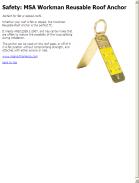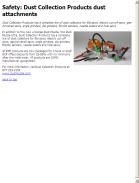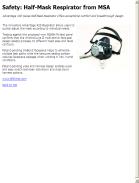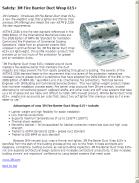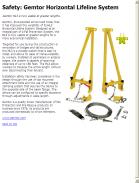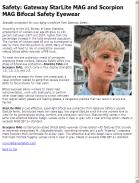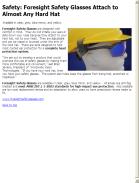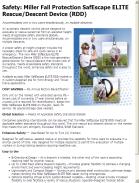Safety: 3M Fire Barrier Duct Wrap 615+
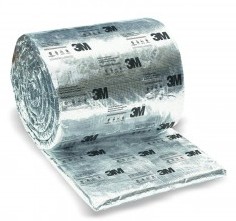 3M Company introduces 3M Fire Barrier Duct Wrap 615+, a new fire-resistant wrap that is lighter and thinner than previous 3M offerings and meets the new ASTM E 2336 fire test requirements.
3M Company introduces 3M Fire Barrier Duct Wrap 615+, a new fire-resistant wrap that is lighter and thinner than previous 3M offerings and meets the new ASTM E 2336 fire test requirements.
ASTM E 2336 is the fire test standard referenced in the 2009 Edition of the International Mechanical Code and the 2008 Edition of NFPA 96 ‘Standard for Ventilation Control and Fire Protection of Commercial Cooking Operations’. Made from an advanced ceramic fiber wrapped in scrim-enforced foil, 3M Fire Barrier Duct Wrap 615+ is a lightweight, thin-profile insulation product that provides up to two hours of fire protection for grease and air ventilation ducts.
“3M Fire Barrier Duct Wrap 615+ installed around ducts creates a fire-resistive barrier that maintains the duct integrity and helps prevent fire from rapidly spreading throughout a building. The severity of the ASTM E 2336 standard leads to the requirement that two layers of fire protection material are necessary around grease ducts in jurisdictions that have adopted the 2009 Edition of the IMC or the 2008 Edition of NFPA 96,” says Mark Lund, P.E. (mechanical, fire protection), Technical Service Engineer with 3M Building and Commercial Services Division. “The new lighter-weight product makes that two-layer installation process easier. Fire barrier wrap products from 3M are a smart, trusted alternative to conventional gypsum wallboard shafts, and other bulky and stiff wrap systems that take up a lot of space and are heavy and difficult to install. 3M’s newest product, 3M Fire Barrier Duct Wrap 615+, weighs only six pounds per cubic foot, about two pcf lighter than previous wraps so it is even easier to use.”
Advantages of new 3M Fire Barrier Duct Wrap 615+ include:
- Lighter weight and high flexibility for easier installation
- Low thermal conductivity
- Supports maximum temperatures of up to 2192°F (1200°C)
- Thermal shock resistant
- Monolithic blanket – foil encapsulated for blanket protection means less dust and high wrap strength
- Tested to ASTM standard E 2236 – grease duct standard
- Tested to ISO 6944 air duct standard
Because 3M’s newest duct wrap is thinner and lighter, 3M Fire Barrier Duct Wrap 615+ is beneficial from the start of the building process all the way to the finish; it helps architects and designers, contractors, building owners, as well as building inspectors. 3M Fire Barrier Duct Wrap 615+ not only expands architectural design options and increases contractors’ productivity, it also increases building owners’ and inspectors’ confidence by using tested systems that meet code.

